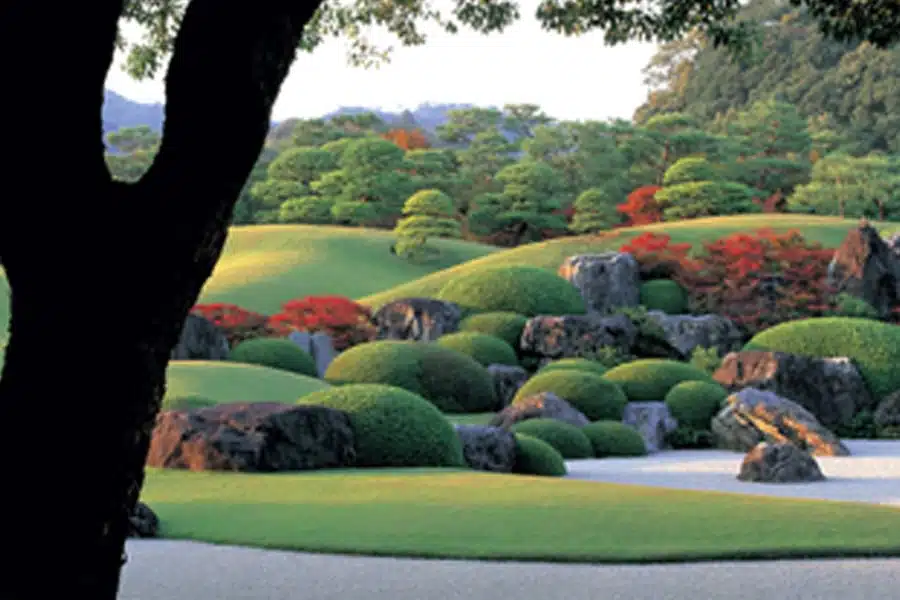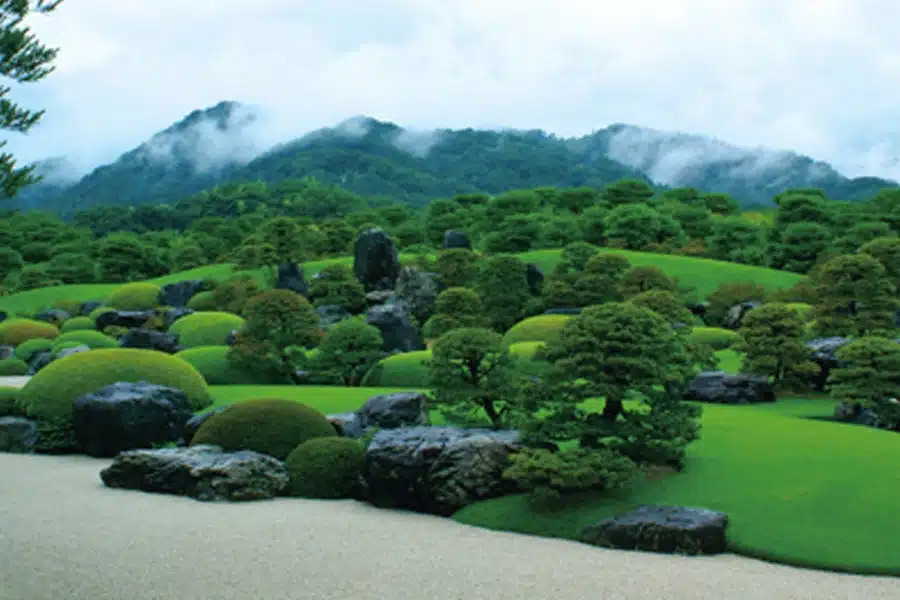What makes traditional Japanese gardens distinctively different from western gardens?
There are a number of design techniques used and one that is especially effective is known as `hide and reveal’, also known as miegakure. It involves creating an illusion of distance by partially concealing a view or features in a garden, such as hills, rocks, water, or lanterns. Its origin is in Chinese landscape painting, where, for example, a sense of depth is created with mist partially hiding and partially revealing mountain scenes.
Unlike most western gardens, where the garden can be seen from many views , Japanese garden designers want to create a sense of mystery that pulls you in, stimulates the imagination, and for the garden to unfold as the visitor moves through it. This creates a contrast of openness and closeness that produces a sense of surprise, anticipation, and suspense. Views are always considered, sequenced, and developed using techniques such as grade changes, twists and turns along the pathways, plant screens, and viewing platforms.
The concern in a Japanese garden is how the visitor will interact with the garden. The design is set up as a whole, with a series of contrasting experiences along the way, with the intention for the visitor to slow down, observe, and experience the beauty. Of equal importance to the physical elements in the garden is the negative space also called yohaku or `white space’, a term borrowed from Chinese landscape painting. Working with both the positive and negative spaces within the garden and how the objects relate to each other, creates a sense of rhythm in the garden.
Japanese gardens feel very natural but they are actually carefully and artfully created to provide the essence of nature in a compact space. For this to be successful, techniques such as `hide and reveal’ add to the awe visitors experience in moving through traditional Japanese gardens.
The Gardens at The Adachi Museum and Garden, located in Yasugi City, Shimane Prefecture, Japan best exemplify the concept of `hide and reveal’. This Garden has been rated as the best garden in Japan for many years by the Journal of Japanese Gardening.

Notice how you get the sense of things being hidden. As the curves move around and into the hills, it makes you wonder what lies beyond, creating a great sense of mystery.

In this view, the zig zag bridge leads into a hidden place and the tea house beyond is veiled in plantings and stone.

Here you can see the many levels of the garden and how it has taken full advantage of the borrowed scenery. Notice that there are no straight lines and how greens can make such a beautiful garden.

The Moss Garden view makes the garden seem extremely large. Notice how the stones and bridges move your eye. In the view beyond, which is mostly hidden, there is a sense of mystery where the bridges lead into the building beyond.
Photo credit: Adachi Museum website.

Make your travel dreams come true with PONANT
Leader in luxury cruises and ocean expeditions.



